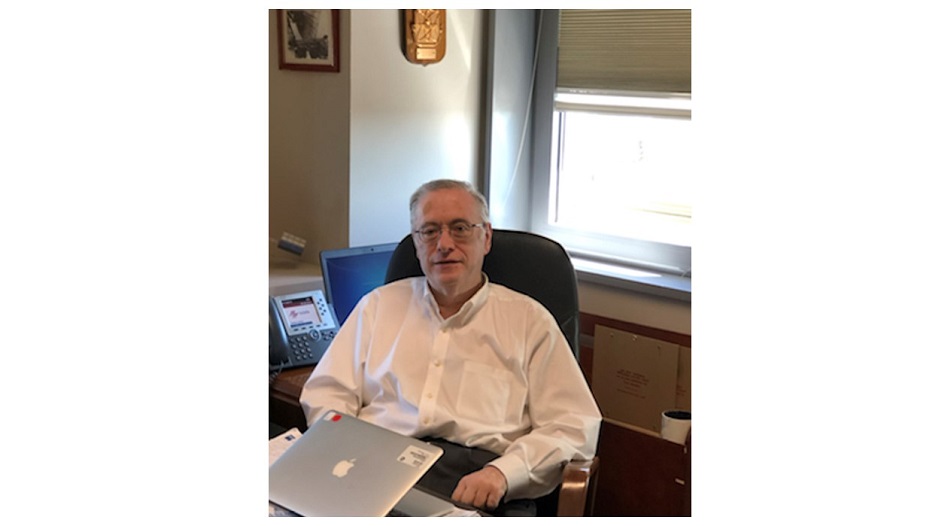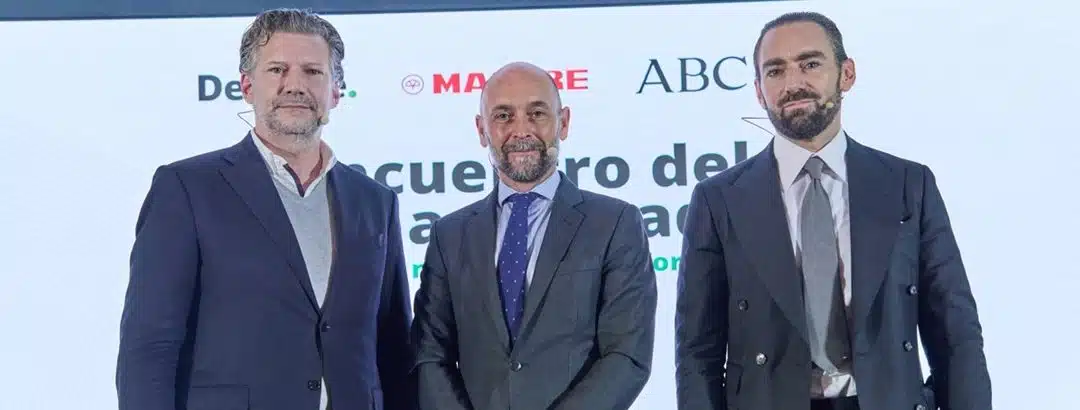admin | 03/07/2019
“Data transmission has evolved in an incredible way, as has the reliability of communications”
For over 50 years, Robledo de Chavela, a town in the Madrid region, has housed one of the three communication centers that comprise NASA’s Deep Space Network (DSN). The other two, located in California (USA) and Canberra (Australia) are separated by approximately 120 degrees longitude. The geographic location of the three facilities was chosen to ensure the constant monitoring of spacecraft and space probes, guaranteeing contact with one of the ground stations regardless of the Earth’s rotation. Anthony Carro, the NASA representative in Spain, spoke to us about the important work that they do there.
Construction started on what is now known as the “Madrid Deep Space Communications Complex” (MDSCC) in 1964. Could you briefly describe the Complex to us, what work is carried out there, and how it is applied?
The MDSCC is part of the Deep Space Network (DSN), which has stations in Madrid, Canberra (Australia), and Goldstone (California) that operate 24 hours a day, every day of the year. All of NASA’s missions and some missions for other space agencies that are carried out in deep space communicate with one another and transmit scientific data through the Network. These are missions to the Moon, as well as outside of the solar system that send information and receive the necessary control orders. The purpose of the missions is scientific; they research the origin of the solar system, search for life, study the composition of the planets both inside and outside of the solar system, as well as many other issues of interest to the scientific community.
“All of NASA’s missions and some missions for other space agencies communicate with one another and transmit data through the Deep Space Network (DSN)”
Why did NASA choose Robledo de Chavela as the location for the Complex? Robledo de Chavela also played a fundamental role in man walking on the Moon for the first time on July 16, 1969. What, specifically, was the Complex’s contribution to that feat?
The main objective is to achieve constant communication with the space stations and the missions being carried out in space. That’s why there need to be at least three equidistant stations; since the original was in the United States, Spain and Australia offered the ideal geographic conditions for the other stations. In Spain, there were a total of four stations – one in the Canary Islands and three in the Community of Madrid – which are still in operation today.
For crewed missions, the main stations used were in Maspalomas, the Canary Islands, and Fresnedillas de la Oliva, close to Madrid, which belonged to NASA. That station’s historic antenna received the first communication from the Moon in Apollo 11, which ended up being transmitted to Robledo de Chavela, which had until then served as a support station. In the museum there you can see one of the few lunar rocks brought from the United States that were recovered from the Apollo 15 mission.
Today, the Complex is part of the Deep Space Network (DSN), together with the facilities in Canberra (Australia) and Goldstone (USA). What tasks are assigned to these stations within NASA?
DSN is a unique network in the world, and the three stations that comprise it have similar equipment. In Madrid we have six antennas that have a range of 26 to 70 meters in diameter, and two more are currently being built that will be 34 meters in diameter. NASA has three communication networks: one for low orbit missions, another for longer distance missions, and the DSN, which is responsible for the missions furthest from Earth (which we call deep space, from the area around the Moon to the furthest reaches of space). Today, the most remote mission is Voyager 1, which is located beyond the solar system, in the Kuiper belt.

Construction began on the Madrid Deep Space Communications Complex (Robledo de Chavela, Madrid) in 1964, and since then it has grown and adapted to NASA’s needs.
The Madrid Deep Space Communications Complex is a cutting-edge center that has six antennas with different diameters and makes up the largest, most sensitive communications system in the world. What objectives are in your sights right now?
The MDSCC has extensive communications transmission and reception capacities, which is essential to NASA and many other space agencies. In fact, given the importance of this network, its technological capacities are being increased. The need for detailed scientific data means that we continue to research greater transmission capacities with smaller wavelengths.
The next step we want to take is to achieve communications at optical frequencies. The Artemis mission, scheduled for 2024, plans to take the first woman and the next man to the Moon. This is going to be a great challenge and communication capacities will be essential.
From an operational point of view, what are the main risks at a complex like the Madrid Deep Space Communications Complex (MDSCC) in Robledo de Chavela?
There are daily operational challenges. There are times when it is essential to communicate with satellites, times when we need to send a command in a critical situation, like when putting an object into orbit, or touching down on a planet, asteroid, or comet. A transmission failure would cause irreparable damage to the mission. For a little over a year now, one of the three stations controls the other two during the day. So when it’s daytime in Spain, Robledo de Chavela not only controls the antennas here, but also those in Australia and the United States, which makes our work much more complex. The operators face daily challenges when they have to reconfigure transmissions due to any equipment failure in three distant countries.
In terms of those challenges, what is the role that technology plays in mitigating these risks? Could you give us an example?
Technology is advancing by gigantic leaps and bounds, but the requirements for communicating scientific data are increasingly demanding. We only have to remember that the Apollo missions had a lower capacity than a modern cell phone to realize that data transmission has evolved incredibly, as has the reliability of communications. This means that missions last longer than planned. The Voyager mission, launched in 1977, continues to operate outside of the solar system and to send information thanks to technological advances. No one had ever imagined that we could maintain contact for more than 40 years, at a distance of over 140 times the distance between the Earth and Sun.
In your opinion, what are the prospects of the space communications industry in the medium and long term? What will it contribute to our everyday lives?
Telecommunications are progressing at a spectacular pace. A large part of the communications carried out today are through space. We regularly need to change our cell phones, computers, and other devices due to constant advances in technology. This is already part of our lives: it would be almost impossible to do without cell phones, GPS, artificial intelligence, etc. And its development, in large part, has been thanks to the scientific advances in developing technology for space flights and communications.
Anthony Carro

Anthony Carro, doctor in Mathematical Physics, Electrical Engineering and Law, has dedicated his entire professional career to aviation and space.
He worked as a scientist for the United States government, and shortly thereafter applied for entry to NASA’s general headquarters in Washington, D.C. He has worked as a researcher and manager for several of the institution’s missions (Fuse, Timed, Near, Messenger, Dawn, Rosetta, JUICE, etc.).
He is currently the space agency’s representative in Spain at the Madrid Deep Space Communications Complex (Robledo de Chavela, Madrid), also known as the MDSCC. Construction began on this communications center in 1964 and it is part of a worldwide network that works in collaboration with two other similar centers located in Australia and the United States.





